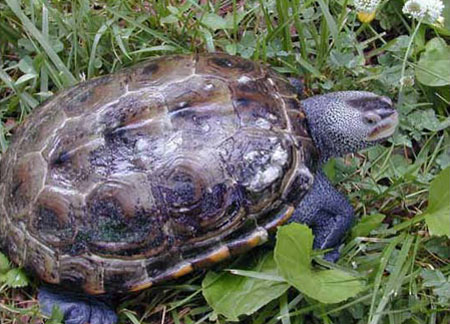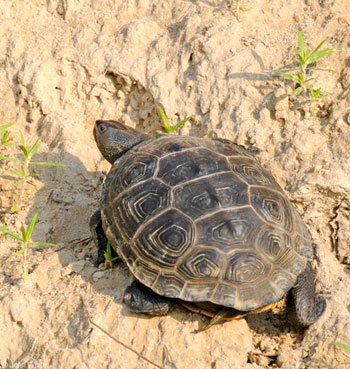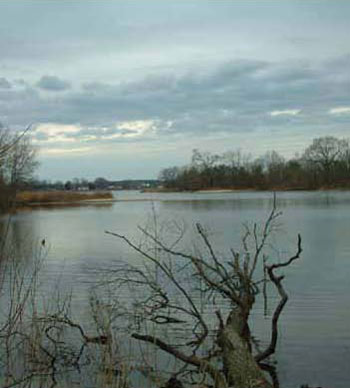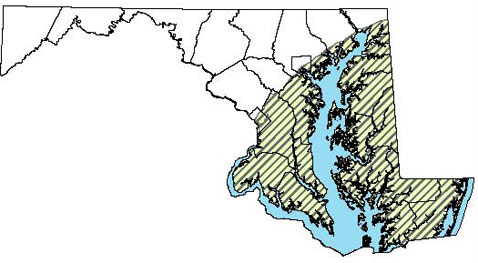Field Guide to Maryland's Turtles (Order Testudines)
Main_Content
Diamond-backed Terrapin (Malaclemys terrapin) | | Common Name:
|

Photo of Diamond-backed Terrapin courtesy of Lori Erb
|
Size: Adult females, 6 - 9 inches. Adult males, 4 - 5½ inches |
Appearance:
- The color of the carapace (top shell) is highly variable from gray, brown, greenish, yellowish to black.
- The carapace is wedge-shaped, the widest part being the rear half.
- Each scute (scale) has a series of concentric growth rings or ridges, which often differ in pigment from the ground color.
- Many individuals have a series of small knobs running down the centerline of the carapace, which is known as a “keel”.
- The skin on the head and limbs is grayish flecked with black “comma-shaped” spotting.
- The lips are yellow to light pink, often with a black “moustache”.

Photo of Diamond-backed Terrapin courtesy of John White
|
Habitats:A turtle of estuaries and tidal rivers. It can be found on sandy beaches and bay islands where it lays its eggs in late May to early July, coastal marshes, and any brackish waters. |
How to Find:Look for them along coastal bay shorelines, islands and marshes during the breeding season, where they are easily captured.
They can be observed in the water through binoculars, with their inquisitive heads extended “periscope” fashion.

Photo of Habitat for Diamond-backed Terrapin courtesy of Rebecca Chalmers
|
Distribution in Maryland:East of the Fall Line, southern Maryland (Prince George's, Anne Arundel, Charles, Calvert and St. Mary's Counties) to the Eastern Shore.

Conservation:
Terrapins were once very plentiful but today are struggling to survive because of loss of nesting beach habitat, increased mortalities from boat collisions, road mortality, and drowning in crab pots and other types of fishing gear.
Each year recreational crab pots unnecessarily claim the lives of terrapins. Waterfront property owners are legally allowed to crab with a maximum of two recreational crab pots. Since 1999, Maryland regulation requires that each entrance funnel of all recreational crab pots must be equipped with a crabpot By-catch Reduction Device (BRD), also known as a Turtle Excluder Device (TED).
|
|
